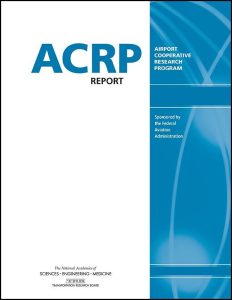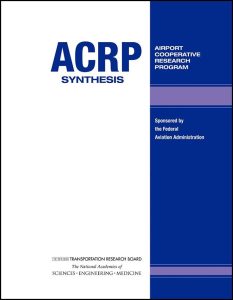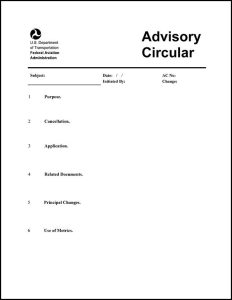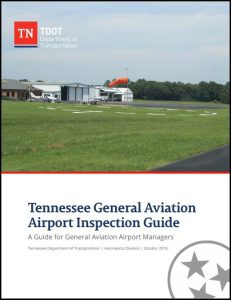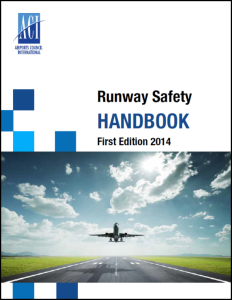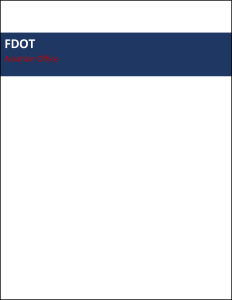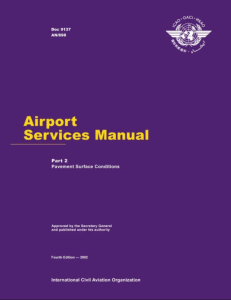To narrow the library of airside resources, use the filter boxes or airport map below or search box above.
Click an item below to expand.
Resources Matching Your Search
2019
ACRP Research Report 195 is designed to assist airport operators in developing and implementing an obstruction management program to protect the airport airspace from encroachment by tall objects. The report will help airport staff develop an obstruction management plan by understanding the regulatory environment, identifying obstructions, and developing a strategy for communication with surrounding communities that will ensure airport involvement in any development issues that could result in an obstruction around the airport. The report is supplemented by ACRP WebResource 7: Best Practices for Airport Obstruction Management Library, which provides reference documents, model documents, and presentation materials for obstruction management outreach. A methodology for creating a composite map of all applicable airspace surfaces as well as examples of interactive airspace composite surface maps for small and large airports are also provided.
2021
This resource is a webpage that provides information on the Electronic Code of Federal Regulations (e-CFR) Title 14, Chapter I, Subchapter G, Part 139, which contains guidance on certification, airport certification manual, and operations.
2021
This webpage contains four subparts that describe aviation security rules governing 1) the operation of airports regularly serving aircraft operations required to be under a security program under Part 1544 of this chapter, as described in this part; 2) the operation of airports regularly serving foreign air carrier operations required to be under a security program under Part 1546 of this chapter, as described in this part; 3) each airport operator that receives a security directive or information circular and each person who receives information from a security directive or information circular issued by the designated official for civil aviation security; and 4) each airport operator that does not have a security program under this part that serves an aircraft operator operating under a security program under Part 1544 of this chapter, or a foreign air carrier operating under a security program under Part 1546 of this chapter—both must comply with §1542.5.
2011
ACRP Synthesis 27 provides insight into common airport self-inspection practices. A comprehensive self-inspection program includes training, inspecting, reporting discrepancies and findings, follow-up, resolution and closeout, and quality control. The report will help airports in benchmarking their self-inspection programs to peer airports and practices considered successful by regional FAA personnel.
2015
ACRP Synthesis 63 explores airport fueling system operations at all sizes of airports. The report describes fueling standards and regulations as well as common operations and components, and it serves as a reference for a number of fueling processes and procedures. On-airport fueling systems and components are the main focus of the report.
2019
This advisory circular (AC) has two purposes. First, this AC describes the qualifications for wildlife biologists who conduct Wildlife Hazard Assessments (WHA) for airports. Second, this AC addresses the minimum wildlife hazard management curriculum for the initial and recurrent training of airport personnel who implement wildlife hazard management plans (WHMPs).
2014
This advisory circular (AC) provides guidelines and procedures for maintaining airport pavements. It provides information on the types of pavement distress that occur to airport pavements and typical corrective action during preventive and remedial maintenance activities. Typical preventive and regular or recurring pavement maintenance includes: routine cleaning, filling, and/or sealing of cracks; patching pavement; seal coating; grading pavement edges; maintaining pavement drainage systems; and restoring pavement markings. Timely maintenance and repair of pavements is essential in maintaining adequate load-carrying capacity, good ride quality necessary for the safe operation of aircraft, good friction characteristics under all weather conditions, and minimizing the potential for foreign object debris (FOD).
2017
This document addresses the issues affecting vital security systems—such as access control, video surveillance, and telecommunications—and empowers airport operators with information, guidelines, standards, toolkits, and templates to overcome the threat.
2010
This advisory circular (AC) provides guidance, specifications, and standards for painting, marking, and lighting of vehicles operating in the airport air operations area (AOA). The approved lights, colors, and markings herein ensure the conspicuity of vehicles operating in the AOA from the ground and the air.
2014
This advisory circular (AC) provides limited guidance on understanding and rating the surface condition of flexible (asphalt) and rigid (concrete) airfield pavements. Appendices A and B of this AC include the Asphalt and Concrete Airfield Pavement Surface Evaluation and Rating Manuals (PASER Manuals). These manuals describe types and causes of distress and provide a rating system to visually rate pavement condition on a scale ranging from excellent to failed.
2018
This state resource provides airport inspectors and airport managers guidance on the standardized execution and conduct of general aviation inspections in accordance with applicable state and federal regulations governing the issuance of State General Aviation Public Use Airport Licenses.
2011
ACRP Synthesis 22 explores how airports implement a pavement maintenance management program, including inspecting and tracking pavement conditions, scheduling maintenance, identifying necessary funds, and treating distresses in asphalt and concrete pavements.
2015
ACRP Synthesis 67 covers challenges and successful strategies that airport operators use at small airports with significant budget and other constraints to coordinate and conduct snow removal operations.
2014
Runway Safety Handbook provides methodologies and best practices that can be implemented to help airport operators achieve a state-of-the-art level of runway safety. It provides guidance material for the development of runway safety programs for all airports (large or small) as well as ways to tailor, improve, and expand existing programs. This resource is available from the ACI store for $125 for members and $1,000 for non-members.
2009
This advisory circular (AC) provides information that airports can use to procure foreign object debris (FOD) detection equipment.
2011
This advisory circular (AC) focuses on non-destructive testing (NDT) equipment that measures pavement surface deflections after applying a static or dynamic load to the pavement. It also briefly introduces other types of non-destructive measuring equipment to illustrate how supplementing NDT data with other test data may improve the quality and reliability of the pavement evaluation.
2002
Federal, state, and local regulations exist to protect the National Airspace System that must be considered when planning and implementing construction that may adversely impact military or public-use aviation facilities (airplane, seaplane, or helicopter facilities), navigational aids, and instrument approach flight procedures in Florida.
2020
This document provides airport operators and security managers with technical, operational, safety, security, regulatory, and cost-benefit information to help determine whether and how autonomous vehicles can address airport security and safety requirements. It highlights real-world cases drawn from aviation and non-aviation environments.
2009
This advisory circular (AC) provides guidelines and procedures for measuring and evaluating runway roughness, as identified by the surface profile data of rigid and flexible airport pavements. The guidance in this AC provides technical procedures to quantify surface irregularities and determine how surface irregularities may affect specific categories of airplanes.
2002
Part 2 assists countries to ensure that adequate measures are taken to overcome problems resulting from contaminants on, or the weathering of, the movement area. This manual includes material concerning the basic factors affecting friction, the correlation between friction-measuring devices on paved surfaces, descriptions of some friction-measuring devices, and the practices for measuring and reporting friction on snow-, ice-, and water-covered surfaces. It also provides material on the collection and dissemination of pavement surface condition information and the clearance and removal of contaminants and debris from the movement area. This resource is available in hardcopy at the ICAO store for $105.
